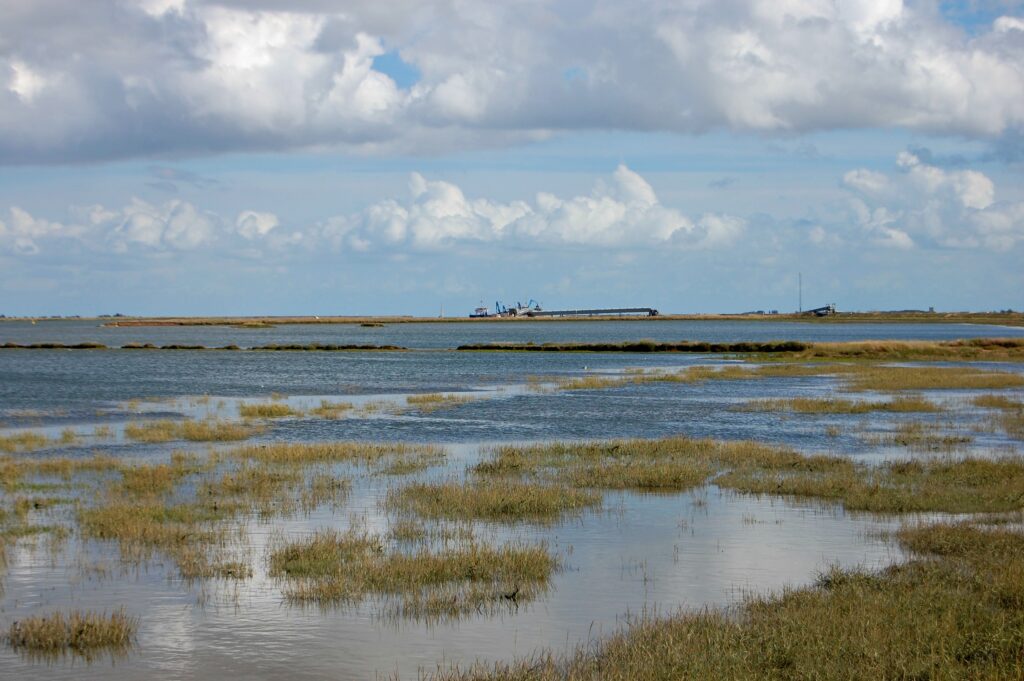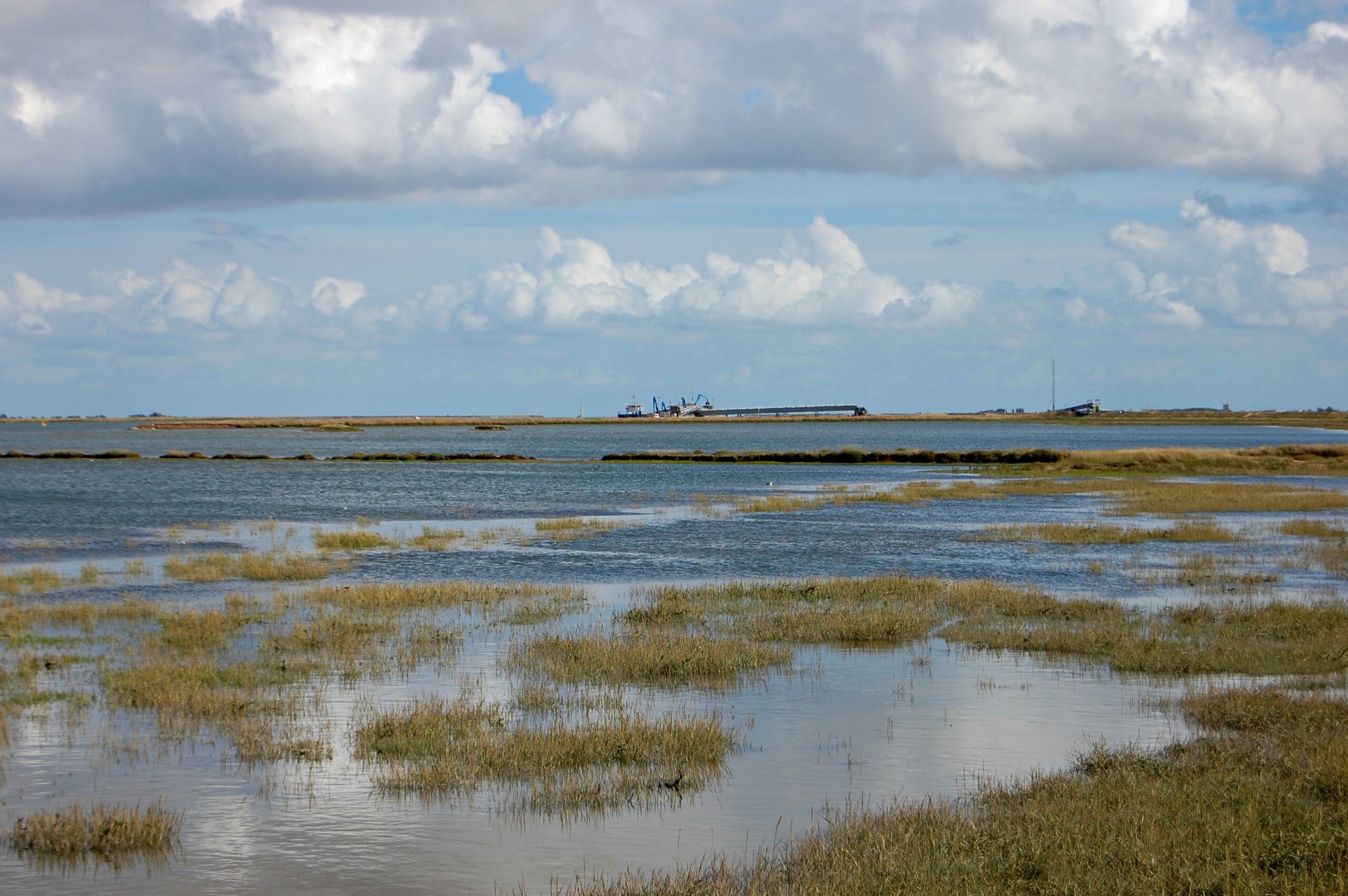The RSPB’s Wallasea Island Wild Coast Project (hereafter ‘Wallasea’), in Essex, will be by far the largest (670ha) coastal wetland ever constructed in Britain. Its design includes a range of features aimed at providing valuable habitat for wildlife, both now and under a range of future sea levels and climatic conditions. In this article, the authors describe the evolution of the project, the thinking underlying the design of the site, and the practicalities of constructing such a large and complex wetland. As this article goes to print, the first area of intertidal habitat at Wallasea will have just been opened to tidal flooding.
The RSPB, in 1999, identified Wallasea Island as a potential site for re-creating intertidal habitat. This was with the aim of replacing intertidal habitat lost through past land-claim, and intertidal habitat expected to be lost in the future through coastal squeeze caused by rising sea levels.

